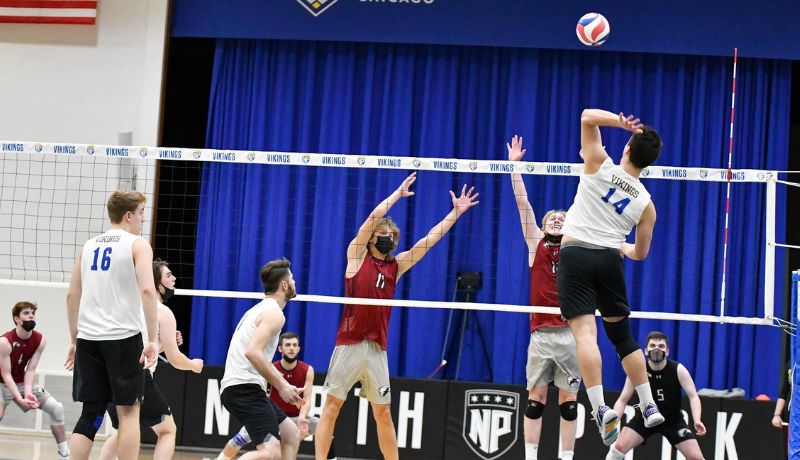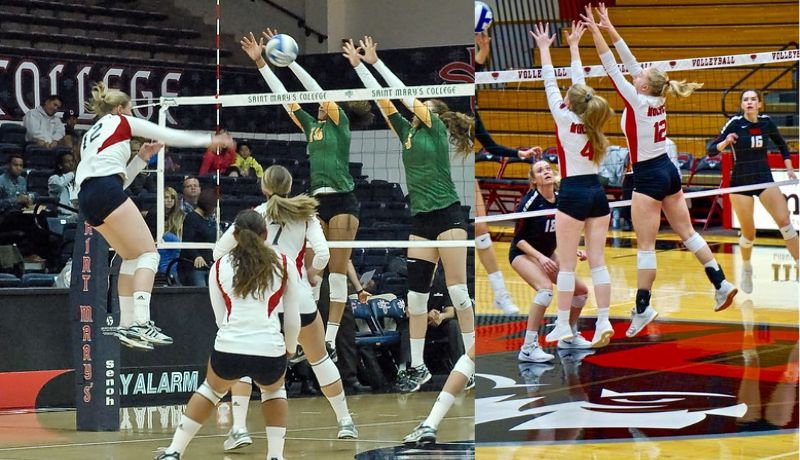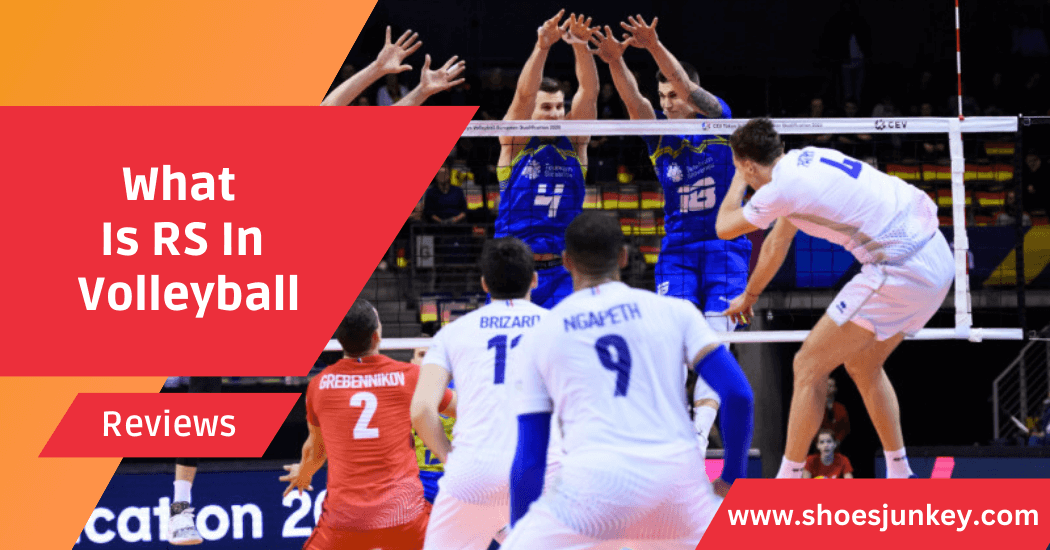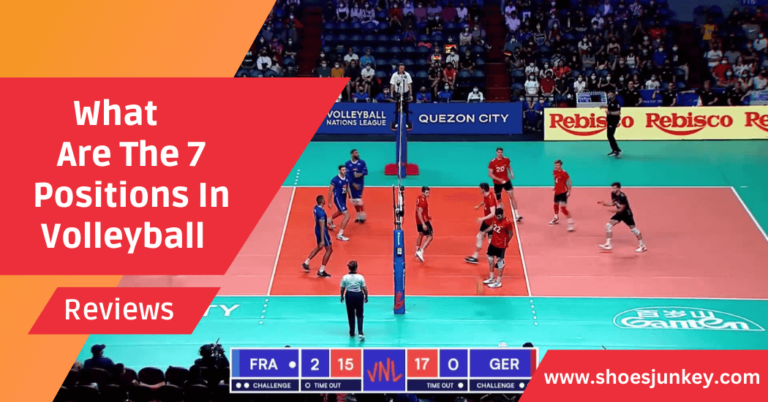What Is RS In Volleyball?
The game of volleyball is replete with specialized positions that require a mastery of complex skills, with the ultimate aim of securing victory in a highly competitive team environment. One such position is the Right Side Hitter or RS.
This article puts the spotlight on the RS position, highlighting its importance, unique role and the skills required in contributing to overall team success.
What is RS in volleyball?

Before diving into the dynamics of the position and the attributes of a star RS player, let’s first build a foundation with the terminology.
Right Side Hitter (RS): Also known as the opposite hitter, the RS is a critical position usually reserved for a team’s most powerful and skilled attackers. The role has evolved over the years, thanks to the contributions of legendary volleyball players and innovative coaching strategies.
The RS position stands distinct from others on the court, such as setters, middle blockers and outside hitters, in terms of its main offensive and defensive roles.
Roles and Responsibilities of the RS
The RS player is the jack of all trades on the volleyball team, required to excel in various aspects of a game. Here’s a brief overview of an RS player’s main responsibilities:
- Attacking: As one of the team’s primary attackers, the RS is often handed the responsibility of scoring points through powerful and well-placed strikes. The RS needs to have considerable leaping power and a strong arm swing to send the ball over the net strategically.
- Blocking: The RS is usually tasked with blocking the opponent’s outside hitters, which requires good timing, strong arms and the ability to read the game.
- Serving: An RS player often serves the ball, requiring excellent ball control and a variety of serving techniques to disrupt the opposing team’s formation.
- Defense: Though placed at the front, an RS is often expected to fall back and aid in defense when the ball is in the opposition’s court. They need to be quick on their feet and have exceptional ball control.
- Team Coordination: Lastly, the RS must have excellent communication skills to coordinate with the team, especially the setter, to plan and execute attacks.

Skills and Qualities of an Effective RS Player
What sets an elite RS player apart? The answer lies in a combination of technical prowess, mental strength and unwavering determination. An outstanding RS player possesses:
- Hitting skills: A powerful, accurate and well-timed hit can be the difference-maker in tight matches.
- Blocking techniques: An RS player must possess an ability to read the game, pick appropriate positions on the court and time the block perfectly to create a formidable defensive wall.
- Defensive skills: An RS player should be adept at digging, receiving serves and executing back-row attacks.
- Communication and teamwork: A crucial aspect of the RS role is the ability to coordinate with teammates and setters to ensure cohesive gameplay and capitalize on scoring opportunities.
- Agility and speed: The ability to move quickly and change direction with ease is vital for an RS player who must cover a wide area of the court, both offensively and defensively.
- Physical strength and endurance: Volleyball matches can be demanding. An RS needs the physical strength to deliver powerful hits and the stamina to maintain a high level of performance throughout the game.
- Strategic thinking: An RS player must think several moves ahead, strategize the plays and exploit weaknesses in the opponent’s defense.
- Resilience and mental toughness: In high-pressure situations, an RS player needs to stay calm, focused and resilient. They should be able to bounce back from setbacks and maintain a positive mindset.
- Leadership: As a key player, the RS often needs to demonstrate leadership, motivating teammates and leading by example on the court.

Special Challenges and Strategies for RS Players
Each position in volleyball has its own share of challenges and the RS spot is no exception. To excel as an RS player, it’s essential to overcome these hurdles:
- Dealing with tight blocks: A great RS player learns to work around strong blockers, adopting strategies like tipping, tooling, or wiping to outwit the opponent.
- Adapting to different sets: RS players must tweak their hitting techniques based on the sets they receive from setters, ensuring a varied and unpredictable offensive strategy.
- Handling pressure situations: Stay calm and focused, especially during crucial points in a game when nerves can make all the difference.
- Overcoming the physical demands: Invest in strength and conditioning routines to maintain peak fitness levels and ward off injury.
Famous RS Players and Their Impact

The world of volleyball has been graced by numerous talented RS players who have left indelible marks on the sport with their extraordinary skills, strategic prowess and inspirational performances. Let’s look at a few notable examples:
- Karch Kiraly: Known as one of the greatest volleyball players of all time, Karch Kiraly excelled as an RS player with his deadly attack, tactical intelligence and leadership skills. His performances guided the USA team to two Olympic gold medals, setting new standards for the RS position.
- Gilberto Amauri de Godoy Filho (Giba): Hailing from Brazil, Giba’s speed, agility and unparalleled attacking prowess have earned him a reputation as one of the most formidable RS players ever. His contributions helped Brazil secure three World Championships and two Olympic Gold medals.
- Sergey Tetyukhin: A Russian legend, Sergey Tetyukhin’s versatility as an RS player was instrumental in Russia’s dominance in international volleyball. His consistent performance, powerful hitting and impressive blocking skills earned him four Olympic medals, including gold in 2012.
- Logan Tom: Considered one of the best female RS players in history, Logan Tom’s attacking strength, defensive skills and strategic understanding of the game have been key to the successes of the USA women’s volleyball team. A four-time Olympian, Tom has received numerous individual awards for her exceptional performances.
- Sheilla Castro: As an RS player, Sheilla Castro was a cornerstone of Brazil’s golden era in women’s volleyball. Her powerful hits, precision serving and leadership on the court contributed to Brazil’s two consecutive Olympic gold medals in 2008 and 2012.
Conclusion:
RS in volleyball is an important part of any team’s strategy. Whether you are a novice or an experienced player, having knowledge of the RS position can help you rise above the competition and have a successful game. Ultimately, understanding the various roles that can be performed by a player in this key role is what will lead to overall success when it comes to winning a match.
Now that you know more about this essential position, use this newfound information as inspiration to amplify your performance and help lead your team to victory! By taking advantage of the skills associated with RS, you can make sure your teammates are never playing defense alone again.







